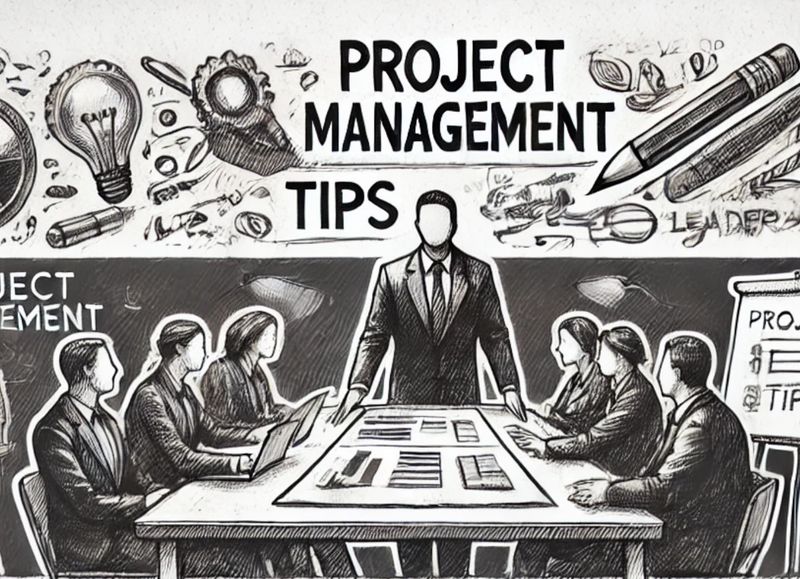How to Effectively Manage Stakeholder Expectations

As a project manager, one of your primary tasks is to align project goals with the expectations of various stakeholders. This group often includes clients, team members, investors, or company executives, each bringing unique needs and perspectives. To manage these expectations, it’s crucial to first understand them comprehensively. This starts with open conversations where stakeholders feel heard and their inputs valued. For example, during the project initiation phase, you might conduct an initial meeting to gather insights, document their key interests, and discuss project deliverables. Understanding these early expectations sets the groundwork for smoother communication down the line.
To illustrate, if you’re leading a software development project, you may talk to the client to understand their vision. What features do they consider most important? What deadlines are non-negotiable? By mapping out these priorities early on, you help build realistic timelines that balance ambition and feasibility. The more precisely you understand these expectations, the better you can prevent misunderstandings that can derail a project.
Communicating Clearly and Proactively
Once you’ve grasped what stakeholders want, clear and proactive communication is your most powerful tool. Regular updates and check-ins help keep stakeholders in the loop and demonstrate that progress is being made according to plan. The key here is consistency—whether through weekly meetings, status reports, or periodic emails.
Consider a scenario where a project timeline has to shift due to unforeseen issues. Transparency is vital; alert stakeholders promptly and explain the reasons behind the delay and the solutions you’re implementing. This not only prevents stakeholders from being caught off guard but also fosters trust by showing that you’re committed to managing challenges responsibly.
In addition to updates, clarify the roles and responsibilities of each team member and stakeholder. When each participant knows their place and understands their contribution, potential conflicts over tasks or decisions diminish. For instance, if a senior executive expects to have decision-making power but was not involved in early discussions, this can create tension. To avoid this, set expectations early on regarding who will be consulted for significant changes or decisions.
Balancing Expectations with Realistic Deliverables
Meeting expectations does not always mean agreeing with every stakeholder request; sometimes, it’s about finding a balanced path that meets most needs while maintaining realistic goals. Not all stakeholder desires can be fulfilled without jeopardizing the project’s timeline or quality. Learning to say no—or rather, how to present alternatives—is an essential skill for project managers.
When facing unrealistic expectations, explain the potential risks and outcomes in a clear manner. For example, if a stakeholder wants to include additional features that would require more development time, you could outline how this change could push back the delivery date. Instead of outright rejecting the request, propose a phased approach: “We can implement the core features by the original deadline and add the rest as part of phase two, which ensures we deliver on time while still meeting the broader project goals.”
Moreover, it’s helpful to document these agreements and conversations to avoid future disputes. Summarize meetings and share notes with all involved parties to ensure that everyone is aligned and has a reference point for decisions made along the way.
Building Strong Relationships for Long-term Success
Effective management of stakeholder expectations goes beyond the project at hand. Building trust and nurturing relationships contribute significantly to long-term success and smoother projects in the future. Engage with stakeholders on a human level—acknowledge their concerns, celebrate shared achievements, and show appreciation for their contributions.
For instance, if a stakeholder’s feedback leads to an improvement in the project’s outcome, highlight this in your updates: “Thanks to the input from the marketing team, we were able to refine our approach and anticipate customer needs more effectively.” Such acknowledgments make stakeholders feel valued and more willing to cooperate throughout the project lifecycle.
Lastly, be open to receiving feedback as much as you give it. Invite stakeholders to share their perspectives on how the project is managed and whether their expectations are being met. This feedback loop helps you refine your approach for current and future projects, demonstrating that you are committed to continuous improvement. By incorporating these strategies, you can manage expectations more effectively, laying the groundwork for successful project outcomes and long-term stakeholder relationships.

